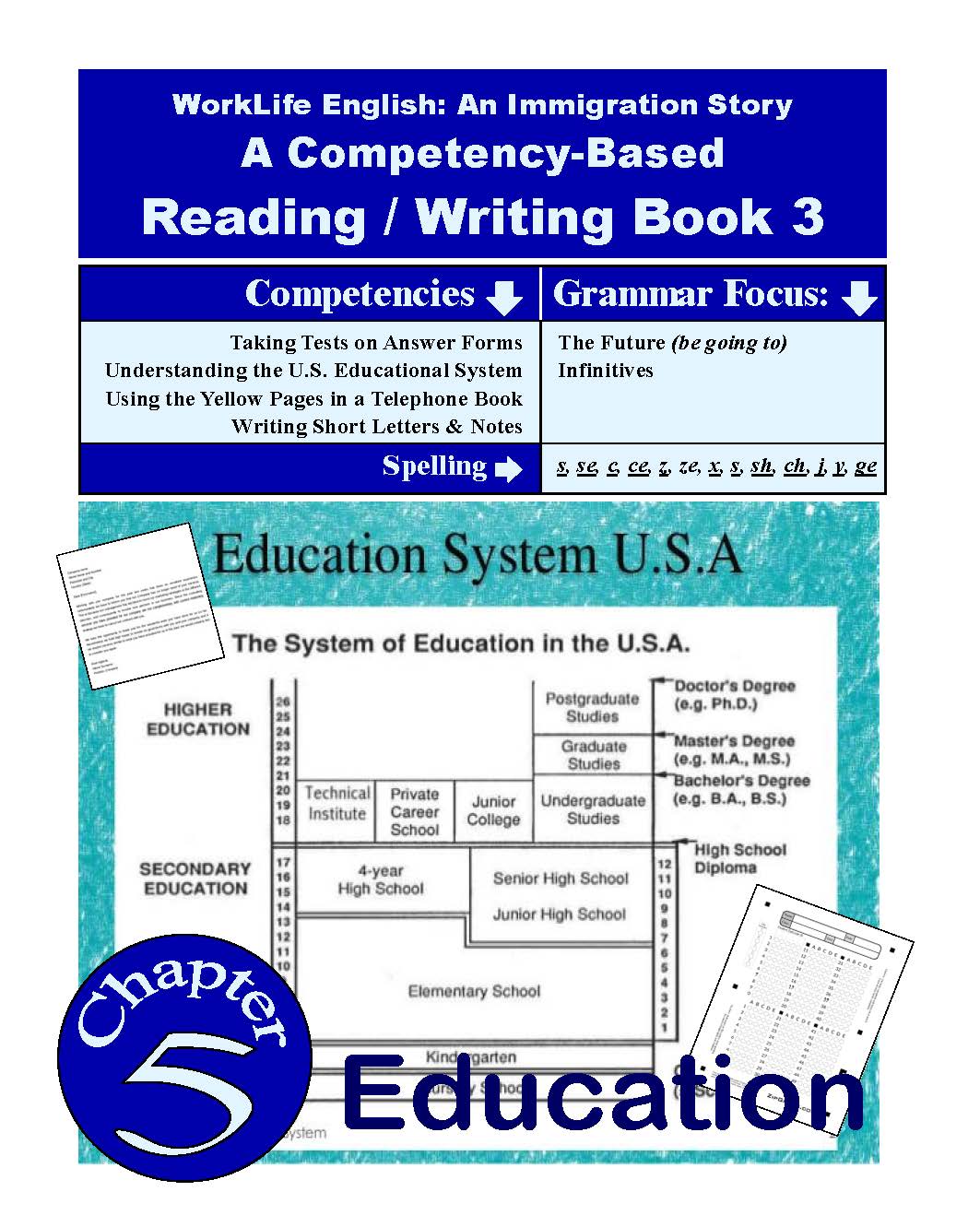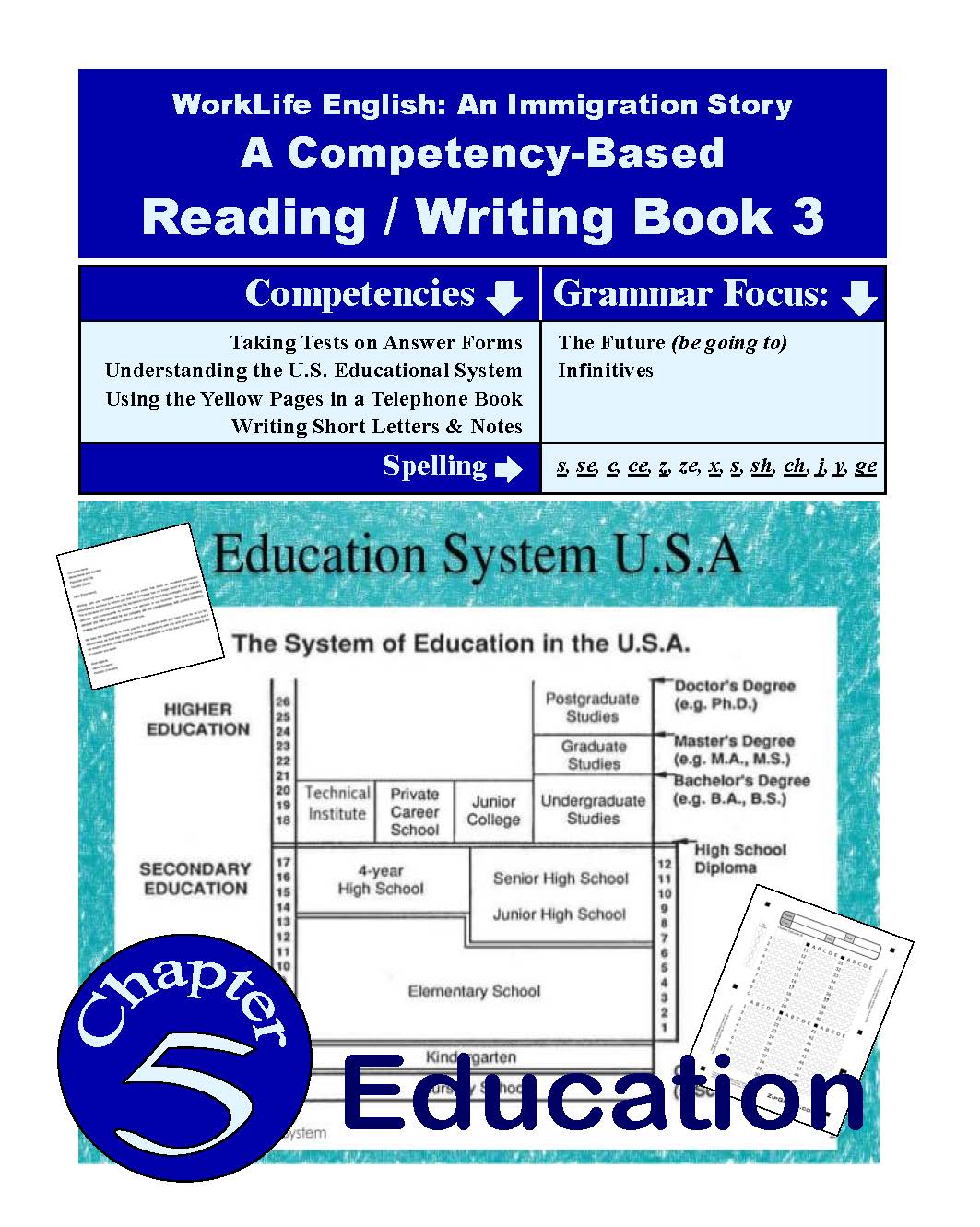1
/
of
1
Work/Life English
F-04.08 View & Learn About the U.S. Educational System, Test-Taking (Answer Forms), & Learning Venues. Write Notes on School-Related Matters.
F-04.08 View & Learn About the U.S. Educational System, Test-Taking (Answer Forms), & Learning Venues. Write Notes on School-Related Matters.
Regular price
$2.00 USD
Regular price
Sale price
$2.00 USD
Unit price
/
per
WorkLife English: a Competency-Based Reading / Writing Book 3: An Immigration Story, Chapter 5 / “Education,” pages 58– 71
14 pages
Who It’s For: Learners Still Interested in Furthering Reading Comprehension + Writing Skills With Info & (Simulated) Realia (Related to Education)
Why You Need It: Like one or more chapters in many language-skills teaching / learning texts, this four-part unit features material on Education—for pupils or students from pre-school age through (college / working / retired) adults. There’s a dual-ending story called “A New School,” a reading selection with a simulated Computer-Answer Form, and fictitious ads for private schools. Then there’s writing instruction.
What You’ll / They’ll Do:
[1] With the color Chapter Opener, discuss what you already know and/or wish to learn about the “Education System in the U.S.A.” Then in Part One / The Story, read and react to a story called “A New School,” in which an older new immigrant enrolls in an English class for the first time. Is it an enjoyable successful experience for him—or does he need to change his “level?” (You get to choose the story ending—and to relate it to your own experiences.)
[2] In Part Two / Practical Reading & Writing, make sure you know how to use a Computerized Answer Form. While or after reading a selection on “The American System of Education,” mark answers to follow-up questions on the Form. Pick up typical school-related vocabulary from the ad mock-ups.
[3] In Part Three / the Rules of Writing, review word, sentence, and paragraph capitalization / punctuation in a short business letter. Go over unusual spellings for the sounds /s z/. Apply these to lists + sentence writing. Do the same with consonant spellings s, sh, ch, j, y, ge. After writing from dictation, write your own paragraph about schooling or educational plans .
[4] In Part Four / Communicating in Writing, analyze the format and content of a typical note to a child’s school. Use given and other phrasing to complete (imaginary and later real) communication with staff or students.
Couldn't load pickup availability


